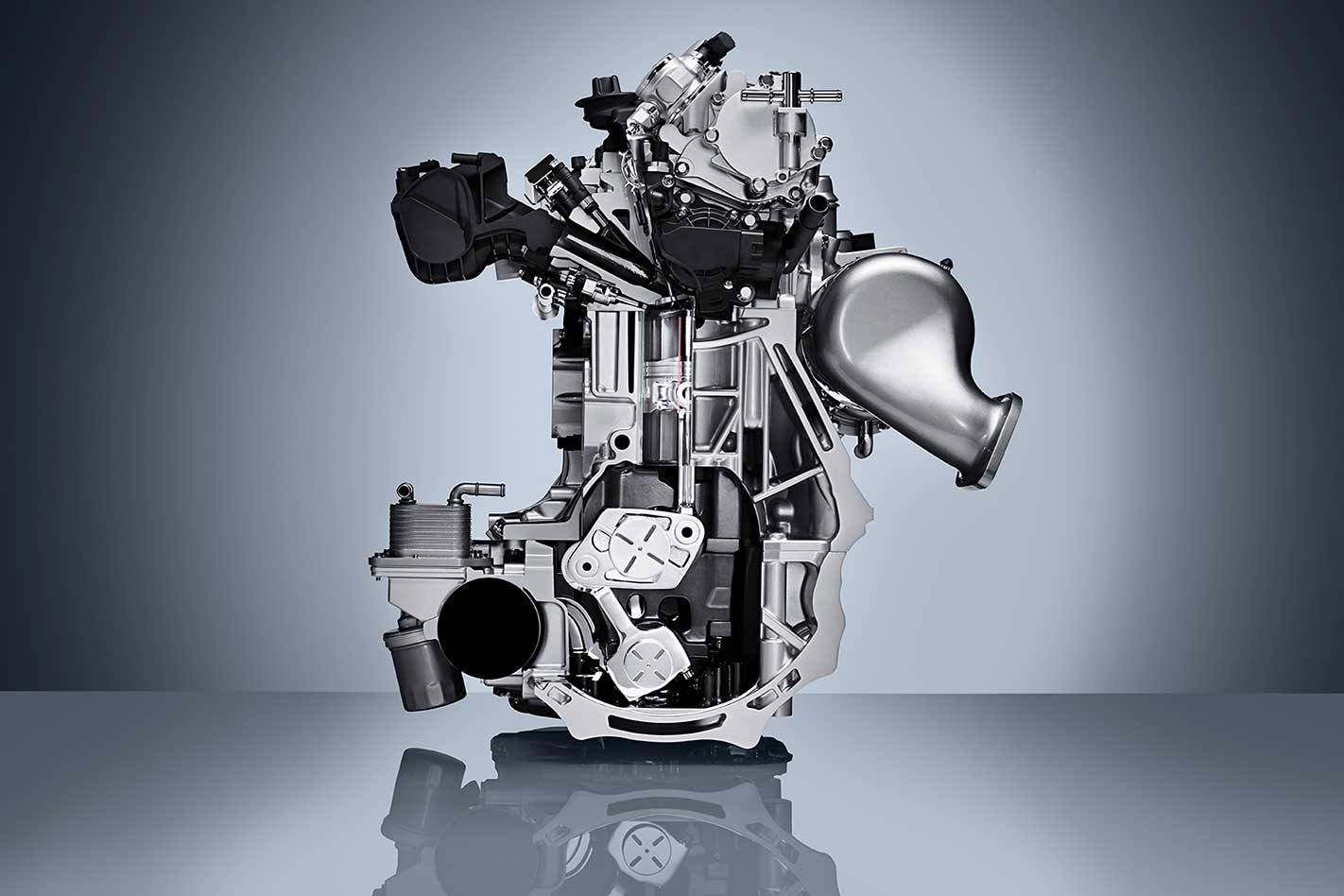AS electric propulsion edges ever closer to the critical popularity tipping point, mainstream brands including Nissan are proving that there’s plenty of life left in combustion power.
The Japanese manufacturer’s VC-Turbo engine uses an ingenious variable crankshaft arrangement that allows the compression ratio to be altered while running. Unlike some ‘virtual’ variable-compression-ratio offerings that use clever valve timing to achieve something similar, Nissan’s VC-T actually changes the TDC (top dead centre) height of the piston.
Under low-load conditions such as freeway cruising, the piston is allowed to travel to the highest permissible position up the cylinder, creating maximum compression before ignition. When maximum power is required, though, the complex multi-link crankshaft pulls its party trick. Instead of a simple plain bearing at the ‘big-end’ of the piston connecting rod, the CV-Turbo engine has a multi-link which connects the offset con-rod to a completely separate control shaft as well as the crankshaft bearing.
When its governing Harmonic Drive rotates the control shaft, the big-end rotates towards the lower side of the crankshaft, in turn lowering the piston’s swept zone and TDC height. This creates more space in the combustion chamber, allowing the turbo to force more air and fuel into the cylinder before combustion for maximum power: two engines in one.
In angry mode, a 2.0-litre VC-T engine can pump out about 200kW but uses around 6.2 litres of fuel per 100km on the combined cycle.
How it works:
Bit of both
Under light conditions when the turbo is virtually idle, the VC-T can squeeze air in the cylinder to 14 times induction pressure before combustion (14:1), but under heavy acceleration the clever crank lowers that ratio to just 8:1, allowing the hard-working turbo to pack in maximum charge.
Con job
Inside the crankcase of a conventional piston engine there are just three bearings per cylinder and only one con-rod. But the extra complexity of the VC-T, with four connecting components, more than doubles the number of bearings. That means more weight and cost.
Smooth operator
As a bonus, the multi-link set-up removes the necessity of balancer shafts in four-cylinder engines. It also reduces the side-to-side movement of the con-rod big-end and almost eliminates side forces on the piston. This in turn reduces friction in the cylinder for better fuel economy and increased service life.





